SAEDNEWS: Imagine that thousands of years ago, people lived who built artificial waterfalls and used them to operate their mills. They supplied the water for their city’s irrigation system using this water, and their farmlands depended on it. The Shushtar hydraulic structures are unique and unparalleled in their kind.

Art resides with the Iranians and nowhere else! When you see the Shushtar hydraulic structures for the first time, this is the first thought that comes to mind. Is it even possible to see the largest development project of hundreds of years ago and not think about it?
The tumultuous history of ancient Iran has always left wonders for future generations. So much so that the fame of these marvels has reached even those abroad. Shushtar and its famous hydraulic structure are one of these legacies left by our ancestors.
The Shushtar hydraulic structures are the largest industrial construction that was undertaken even before the Industrial Revolution. I am not the one saying this—Madame Jean Dieulafoy, the renowned French archaeologist, mentioned it in her travelogue.
Many people from all over Iran and the world visit Shushtar every year to see these global wonders and immerse themselves in the watery world that our ancestors built with mud bricks.
When you see the Shushtar hydraulic structures for the first time, you realize why people from Iran and across the world make the journey to witness them. For 2,000 years, mud, bricks, and water have remained strong and steadfast together to form thirteen hydraulic structures that bring prosperity and life.
Aside from the historical value of the Shushtar hydraulic structures themselves, you cannot ignore their visual and emotional appeal. The sound of the waterfalls echoes in your ears. The wind creates small waves on the river in the middle of the structure, and you can see the joyful birds flying around.
No matter how much I speak about the wonder of the Shushtar hydraulic structures, it is never enough. You must be there yourself to grasp their grandeur bit by bit. Despite all the ups and downs that this structure has witnessed, its life is now at risk, and one day, there may no longer be any trace of all this beauty and authenticity.
"People, whether in any part of Iran or abroad, every year make their way to the Shushtar Hydraulic Structures to take a look at the artistry of architects who built something only with soil and clay, which even today would be difficult or even impossible to construct.
The entire water complex in the city of Shushtar consists of a total of 13 structures and was registered as one of Iran’s national monuments on December 8, 1998. In 2009, this structure was collectively listed on UNESCO’s World Heritage list.
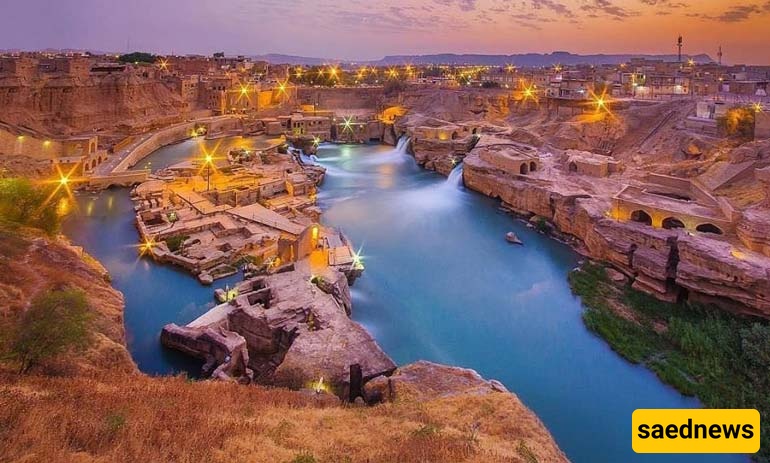
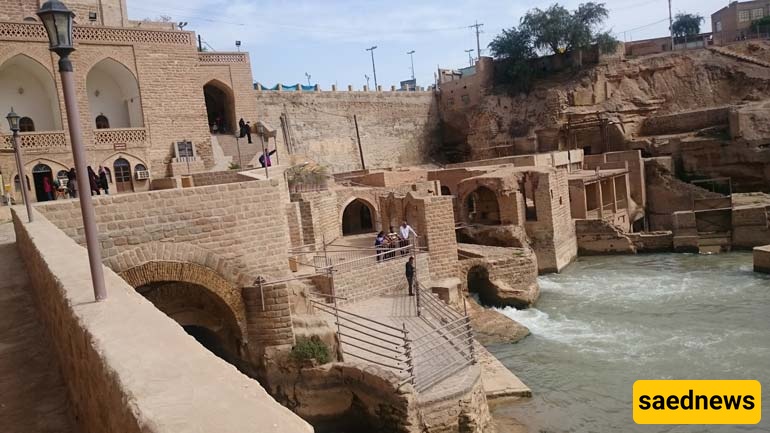
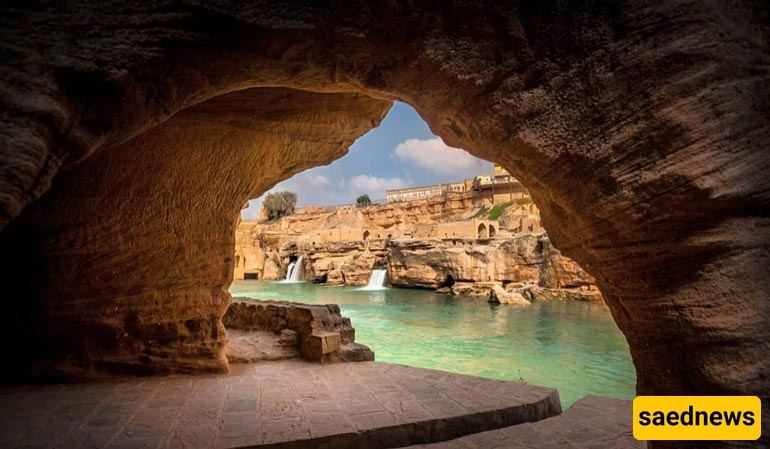
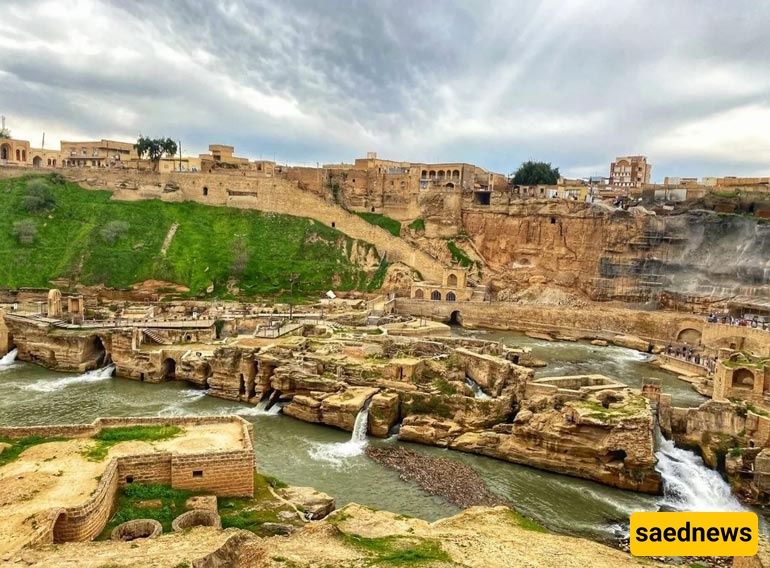

The address of the Shushtar Hydraulic Structures is very straightforward. To reach this site, enter Shushtar, go to Do Khaharan, 17 Shahrivar Square, and then Shariati Street until you reach your destination.
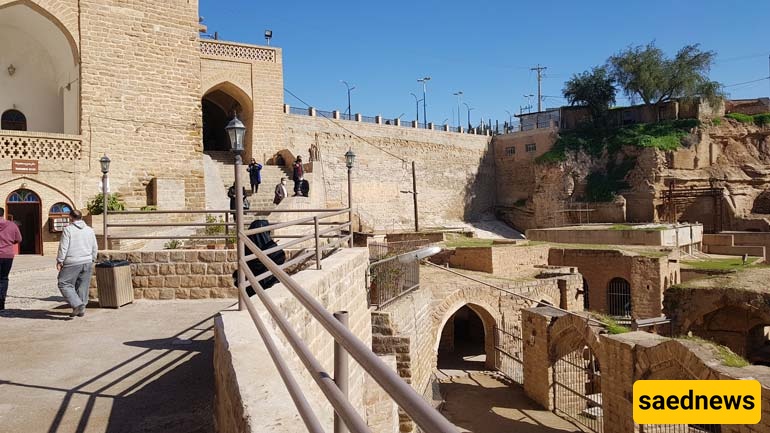
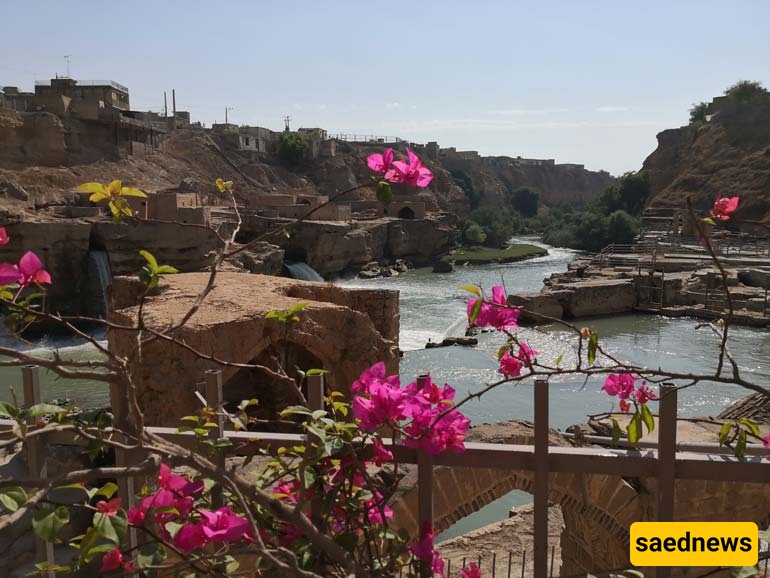

When we talk about the Achaemenids, the first things that come to mind are prosperity, beauty, and flourishing. The first bricks of the Shushtar Hydraulic Structures were also laid during this historical period. Some historians even say that the construction of this complex was ordered by Cyrus the Great.
Although I cannot give you an exact date of its construction, historical writings from the Sassanid era indicate that most of the bridges, dams, mills, waterfalls, canals, and tunnels were built during that time.
The reconstruction and development of various parts of the Shushtar Hydraulic Structures began during the Sassanid era. This development started around 300 years after the birth of Christ. Shapur I valued this complex greatly and made considerable efforts to develop it.
When the Roman Emperor Valerian was defeated by Shapur I in battle, hundreds of Romans were captured by the Iranians. Shapur the Sassanian ordered them to be used for the development and expansion of the Shushtar Hydraulic Structures.
Many famous foreign tourists have visited the Shushtar Hydraulic Structures and spoke of it with wonder and admiration. Dozens of books, articles, and dissertations have been written about this hydraulic masterpiece. The most famous of these is the renowned Arab traveler Ibn Battuta, who saw this structure and wrote about it in his books.
The Shushtar Hydraulic Structures were built with clay, soil, wood, and mortar over hundreds of years, and various sections were added for different purposes. Initially, it was only a dam, but sections such as mills and water channels were added to provide drinking water and irrigation for the people of the region.
Even today, the Shushtar Hydraulic Structures remain one of the marvels of the Sassanid era, with much to say in terms of beauty and wonder. Unfortunately, however, everything that comes also goes. Since the Qajar era, nature has not been kind to this structure, and many of its sections have either been completely destroyed or are in the process of deteriorating."
This building now serves only a visual purpose and has not been used since the Qajar period, but people from different parts of Iran travel to Shushtar to see the “Iranian Venice” and admire what our ancestors built.
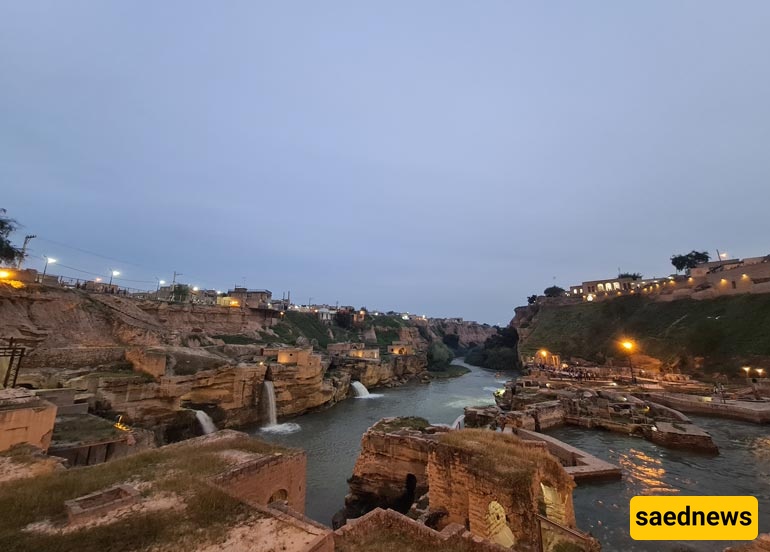
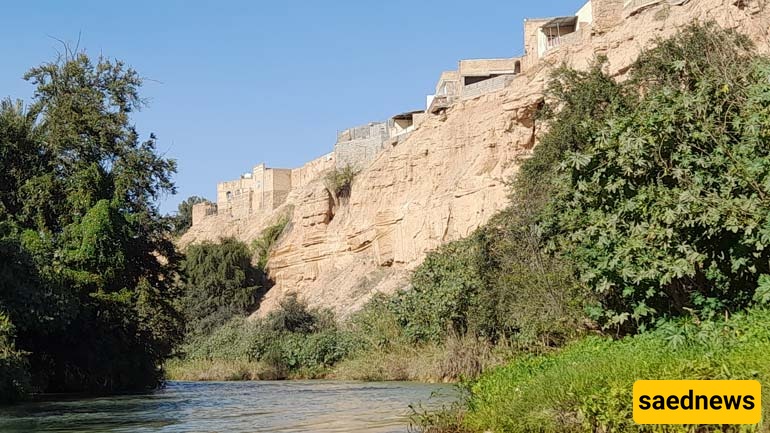
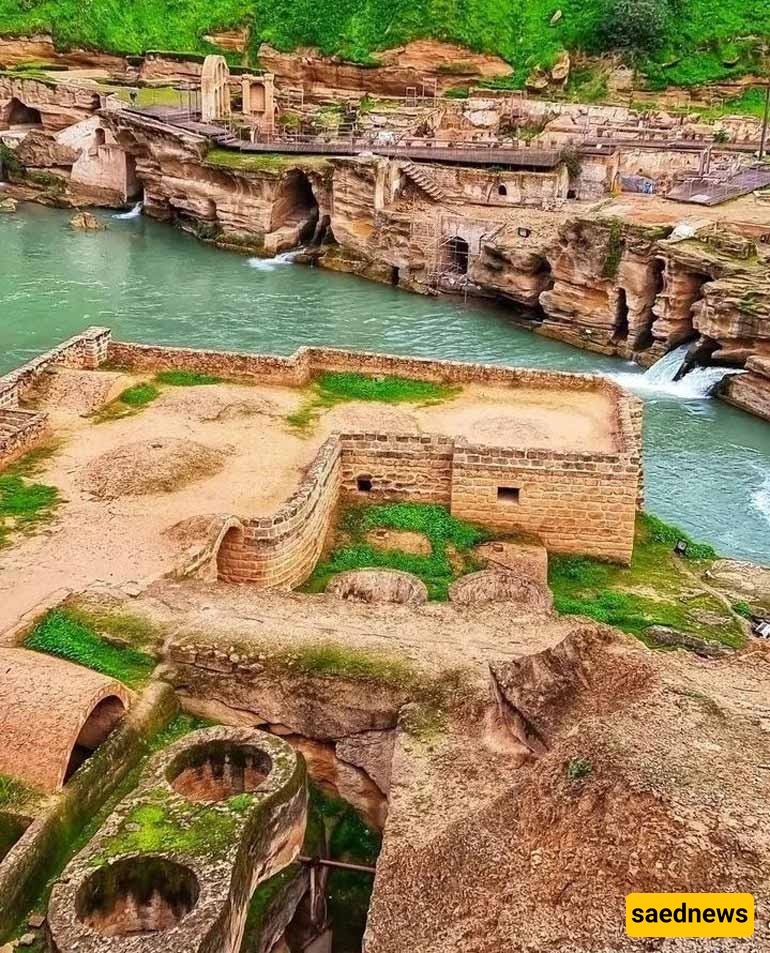
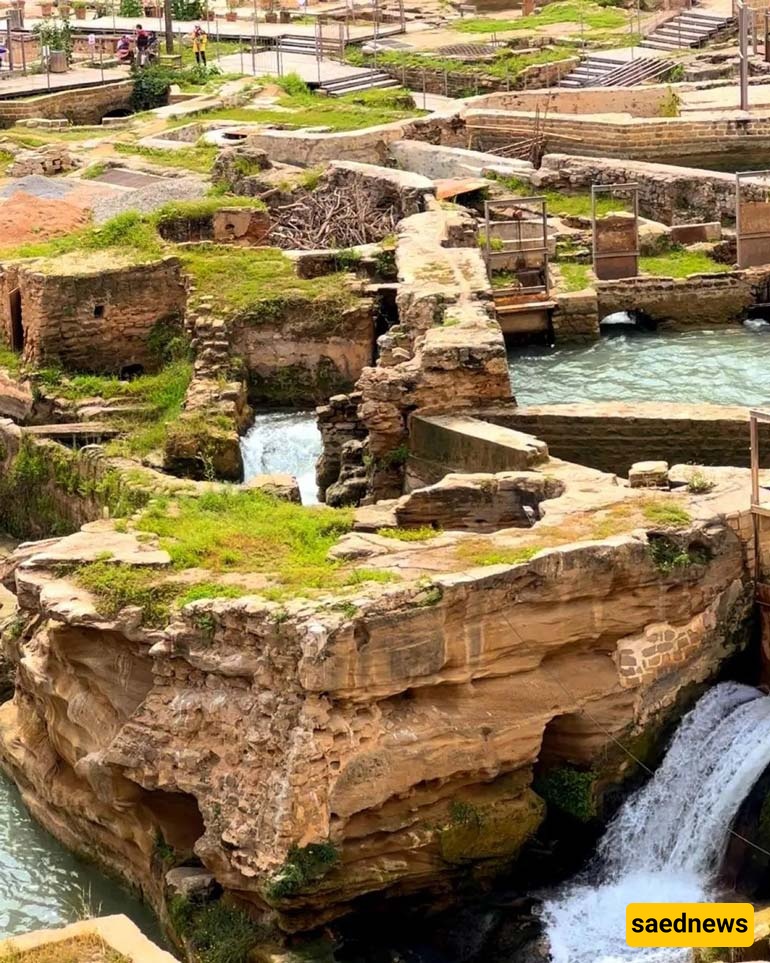
The historical water system of Shushtar is known worldwide as the Shushtar Hydraulic Structures. Until you see it up close, you cannot fully understand this name. The entire building is made up of complexes that all work together using a hydraulic system.
These elements worked hand in hand throughout history, which led this complex to be known as the Shushtar Hydraulic Structures. Interestingly, this structure is so famous worldwide that many historical books mention it as one of the wonders of Iran and the ancient world.
We also owe this honor to all the engineers who built dams on the Karun River and directed its water to various parts to bring prosperity and life to the Shushtar region.
Although the original purpose of constructing the Shushtar Hydraulic Structures was to honor the goddess of water and fertility, Anahita, the prosperity of the city and the surrounding civilization exceeded expectations and it became a source of irrigation for agricultural lands and a driving force for mills that ground wheat.
For this reason, over time, the Shushtar Hydraulic Structures became known as an interconnected hydraulic structure, and the name of the city where it is located, Shushtar, remained attached to it. Today, people around the world know it as the Shushtar Historical Hydraulic System.

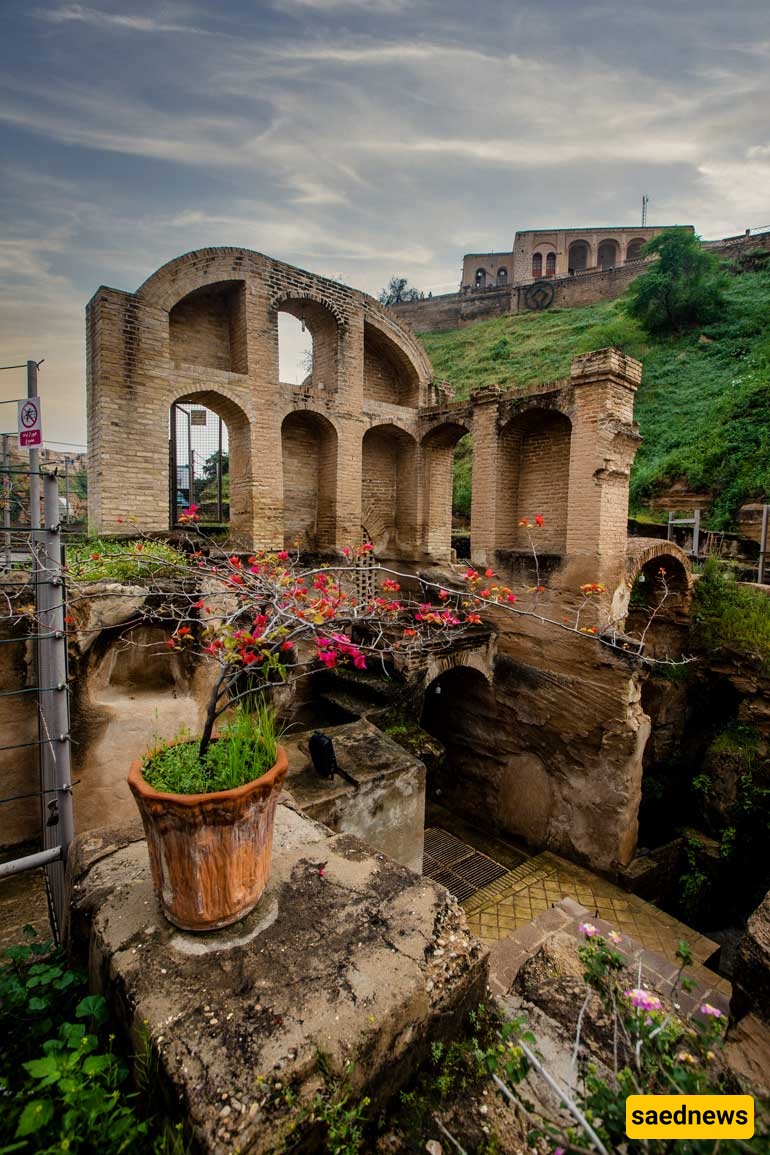
The Shushtar Hydraulic Structures, as one of the most attractive tourist destinations in Khuzestan, consist of 13 main sections, with bridges and tunnels connecting them. Below, we introduce the various parts so you can become more familiar with them.
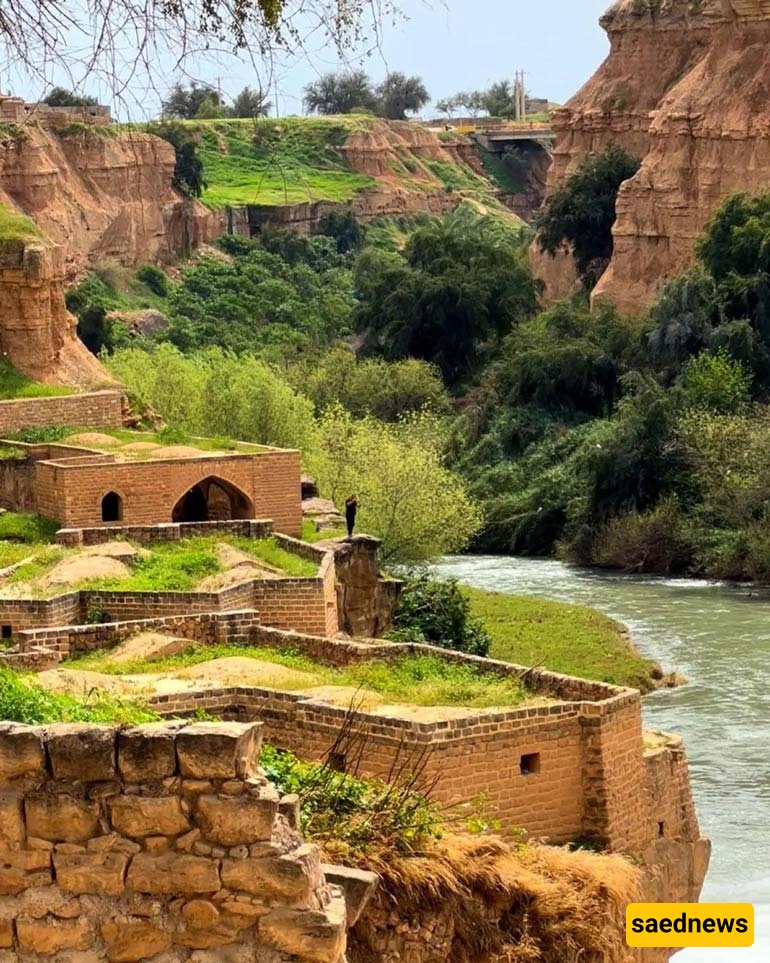
If you enter Shariati Street, you will see several waterfalls and water mills. This is the southern section of the Gargar Bridge, which includes a collection of a dam, water channels, water mills, and tunnels. When the Shushtar Hydraulic Structures were operational, when the Gargar River rose, the water would enter the channels and fall onto the mills to operate them, and the rest would cascade down as beautiful waterfalls.
Now, the multiple mills no longer operate, and only the Reza Golab mill works. You can still see the delicacy and beauty of the Iranian engineers’ handiwork.

The oldest part of the Shushtar Hydraulic Structures is the Salasel Castle. When you look at it, you can clearly recognize its function. At one time, this castle had a military function and was designed to protect the city.
Another use of this castle was to control the water of the Dariun River. The castle itself had various sections such as a shabestan (prayer hall), tower, nagara house (drum house), barracks, walls, powder house, and a moat. Unfortunately, today, not much remains of this castle, and only the tunnels of the Dariun canal and a few underground rooms are left.

Before Band-e Mizan, there is a tower called Kolah Farangi in the Shushtar Hydraulic System. This tower is built on bases 4 meters long and is designed in an octagonal shape. The tower is decorated with carved stones, but only 7 meters of its height remains.
We still do not know exactly why this tower was built, but some believe it was a place where Shapur of the Sassanid era supervised Roman soldiers and workers. From 17 Shahrivar Square, you can easily see the Kolah Farangi Tower.
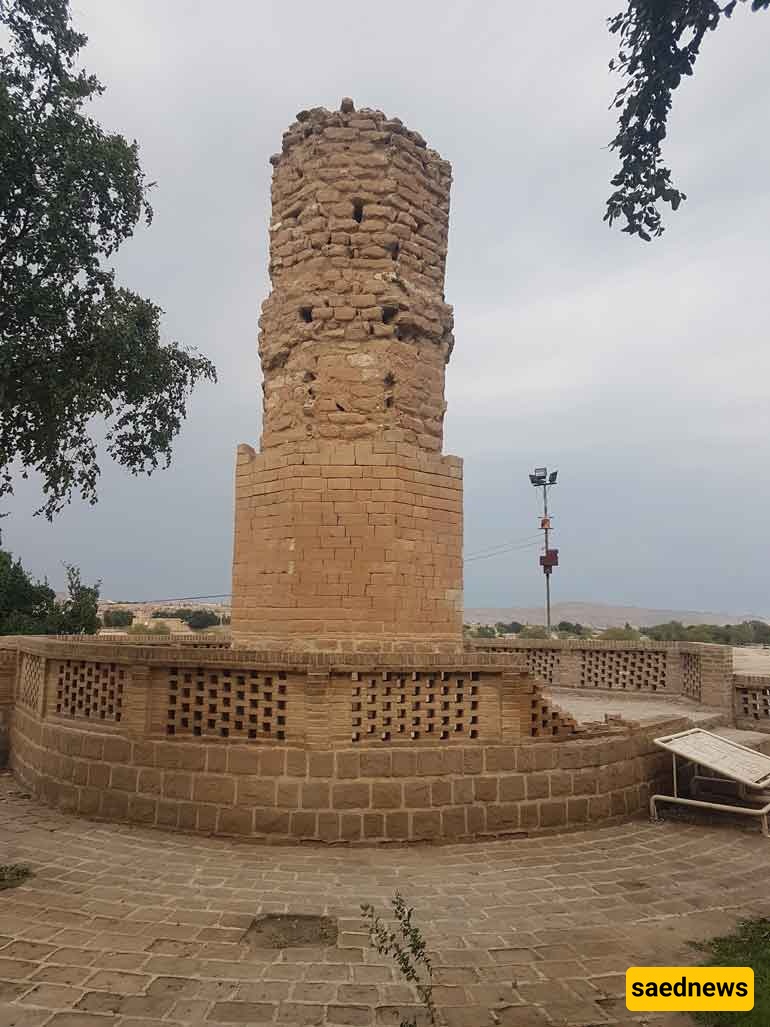

The dam is considered one of the most important parts of the Shushtar Hydraulic System. This section has several openings and divides the river water into two parts: Shotit and Gargar. Its operation works in such a way that if the water flow of Shotit exceeds one-third, the excess water is directed to Gargar. It also works in the opposite manner. This itself is considered an amazing piece of architecture.
Because the dam divides water into two equal parts, it is called Band-e Mizan. This dam also has names like Qeysar, Shapuri, Dowlatshah, Taraz, Khaghan, and Mohammad Ali Shah. The dam is made of stone and mortar and is located at the end section of the Kolah Farangi Tower.
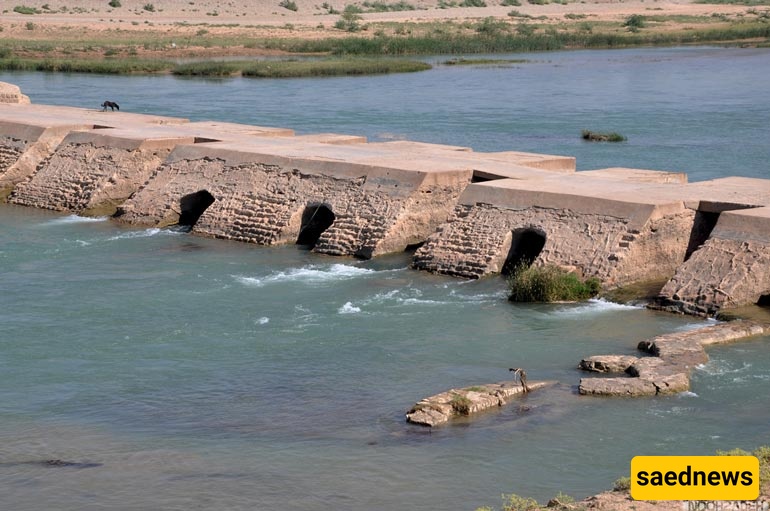
The Karun River has several branches, and the Gargar River is one of them. This river was artificially constructed by the order of Ardeshir Sassanid. Its riverbed is paved with stones and joined with metal clamps so that the riverbed does not deepen. This river contributes to the cycle of the Shushtar Hydraulic System.
In the lower part of Band-e Mizan, there is a mill supplied with water by Pol Band-e Gargar and three other tunnels named Beliti, Shahr, and Se-Kooreh. The water passed over rocks and through tunnels to operate the mill. Now that no one is there to grind the wheat, the water falls as a waterfall from the rocks, creating a pleasant view.
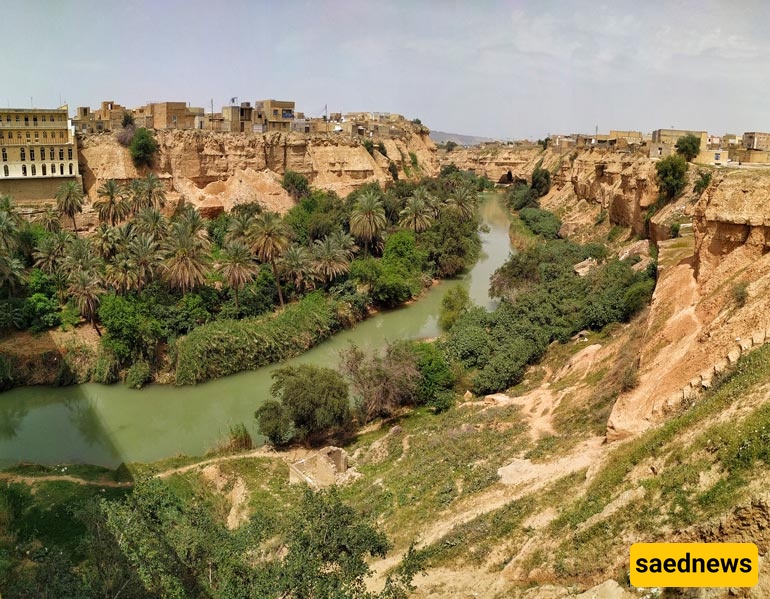
On the Gargar River, in the lower part of the waterfalls of the Shushtar Hydraulic System, lies Pol Band-e Borj-Ayar. The water for this bridge was supplied through the Beliti tunnel. Even now, in the eastern part of Band-e Borj-Ayar, you can see the remains of its small rooms and channels.
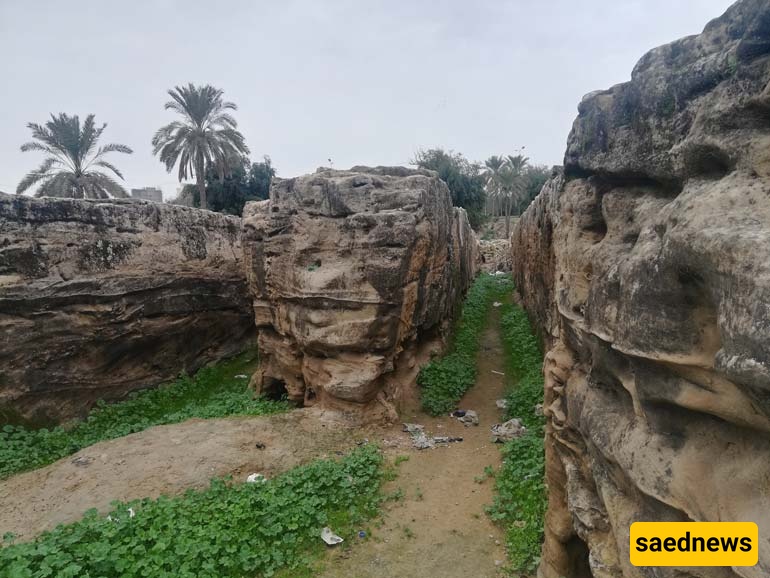
If you walk alongside the Karun River, you can still see the remains of one of the most important bridges of the Shushtar Hydraulic System. Pol Band-e Shadroun was once built with bricks by Shapur I to elevate the water in Shushtar. One of the people who wrote about Pol Band-e Shadroun and saw it firsthand was Ibn Hawqal, who mentioned it in his book Surat al-Ard.

Shah Ali Bridge is actually the same as Shah Ali Dam and has three main spans. This bridge is built over the Dariun Canal. Shah Ali Bridge was a connecting bridge and was also used during the Sufi period and the Pahlavi II era. It connected Shushtar to its southern villages. However, a new bridge was built between Ahvaz and Shushtar, and the use of this bridge became obsolete.
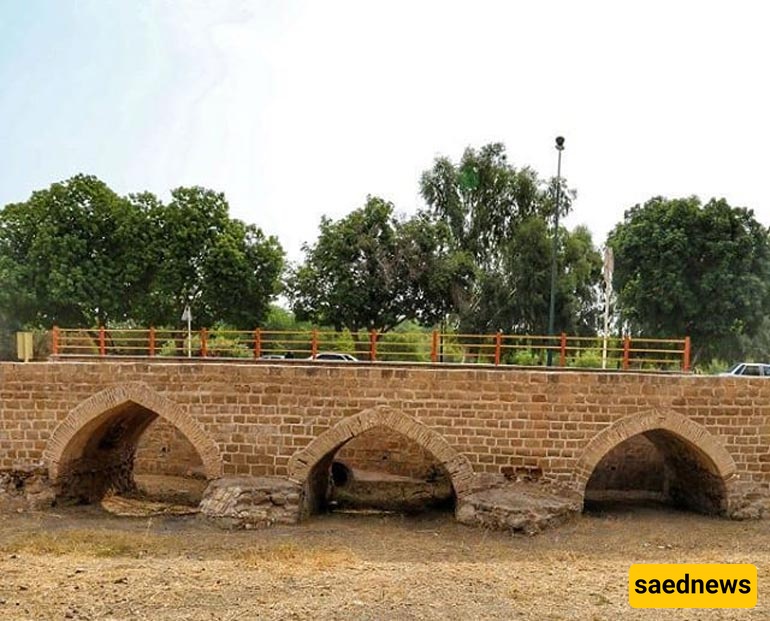
Next to Imamzadeh Abdullah and over the Raqat Canal, Lashkar Dam Bridge of the Shushtar waterworks complex was constructed. The city of Shushtar had six historical gates, one of which was next to this dam bridge. You can still see its remains. This site is still standing and was restored in 2008.
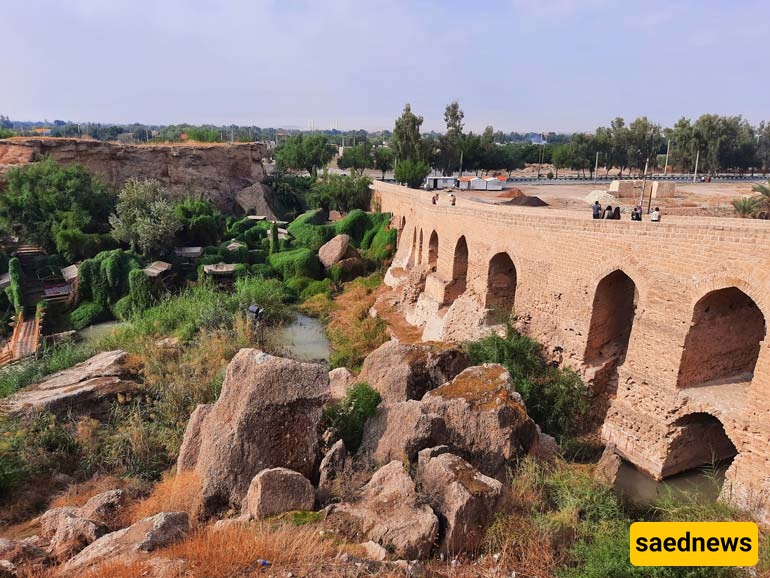
During the restoration of Lashkar Dam Bridge, traces of one or two Parthian graves were also found next to its foundations. This indicates that these people might have worked here and were buried on the same site.
From the Dariun Canal, water called Raqat Canal branched off from the Shushtar waterworks complex. This water was exchanged between the two canals via Khak Dam. This structure is U-shaped and has two different sections: one open and the other covered.
This dam was designed to prevent floods. Thanks to this dam, the flood did not threaten the plains of Mianab and Shushtar. Unfortunately, in the 1980s, a large part of this dam was destroyed to construct a ring road.
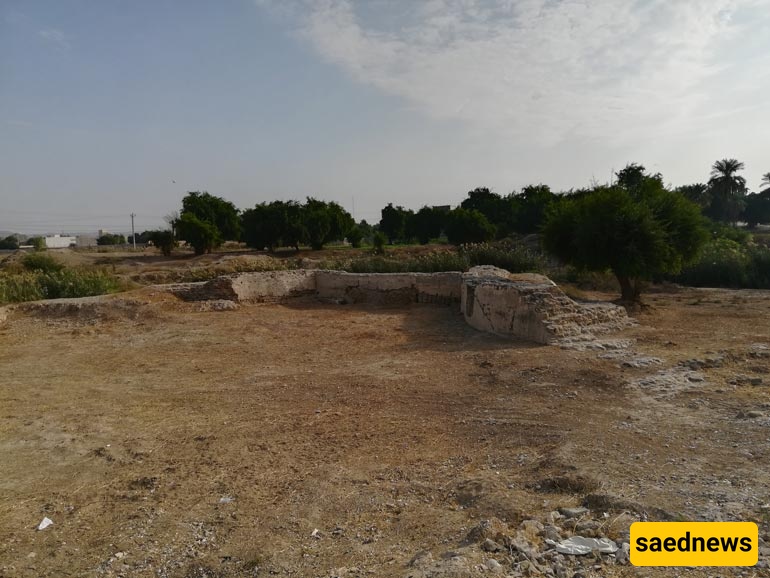
Along the Raqat Canal, in the southern part of Shushtar, Sharabdar Dam is located. Sharabdar Dam is an important part of the Shushtar waterworks and is made of stone and mortar. This dam also served as a connecting bridge and linked Khorram Citadel, a military fortress, to the northern part of the Dariun Canal.

This dam was used to irrigate vineyards. Sharabdar Dam itself is situated between two other important sections called Lashkar Dam Bridge and Khodaafarin Dam Bridge.
The Karun River passes near Dokhtar Castle through the last mountainous gorge. This section’s dam is called Dokhtar Dam. Dokhtar Dariun Dam takes its name from Dokhtar Castle. Some archaeologists believe that this dam was dedicated to the water and fertility goddess Anahita, which is why it is called Dokhtar Dam.
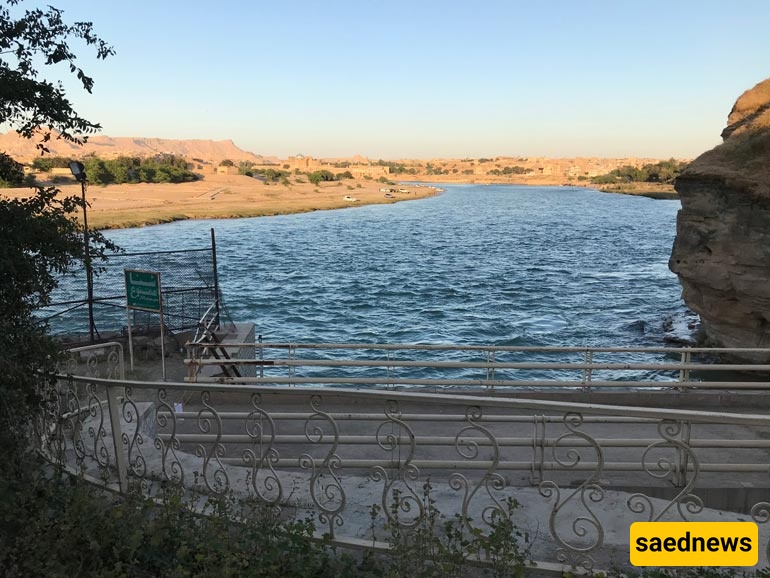
As mentioned earlier, the Shushtar waterworks were essentially a complex of dams and mills. This area was called Sika. Sika had 32 mills that transformed water power into motion, causing all the mills to operate. The Sika section was used for leisure, recreation, and relaxation, and it was designed with a roofed structure.
In the walls of Sika, there is a water channel that is architecturally very remarkable. The water flows into an octagonal basin, creating an interesting space.
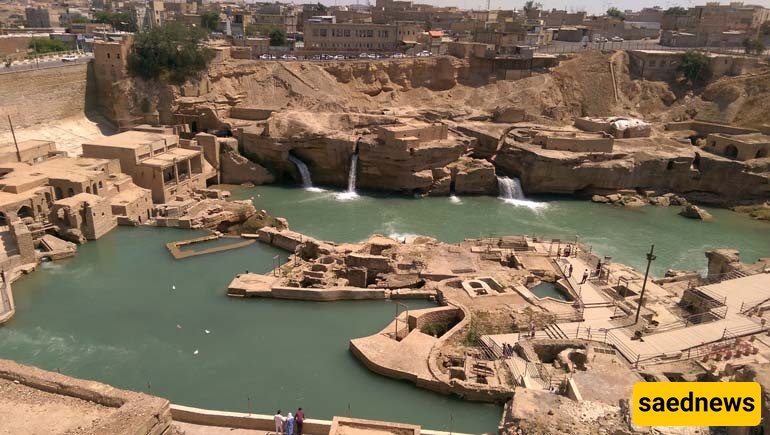
If you visit the Shushtar waterworks, be sure to visit its southern section. In this part, apart from the beautiful waterfalls cascading down the rocks for hundreds of years, there are 200 steps. What is interesting about these steps is the ancient history of this section, especially its structures. The staircase area connects the waterfalls to the residential section. There are also small rooms along the path.
Herodotus once climbed these steps and spoke about them 2,500 years ago. At that time, he believed that these steps were 1,000 years old. The small rooms and the famous structures have been fully examined and are estimated to have been built for guarding purposes, dating back approximately 4,000 years.
Usually, spring is the best season to travel to Khuzestan and the city of Shushtar and to see the Shushtar Hydraulic System. The Shushtar Hydraulic System is worth visiting in the spring. In the months of Ordibehesht and Khordad (approximately late April to late June), many travelers come from surrounding areas to witness this masterpiece and architectural wonder. To visit this structure, you need to purchase a ticket, which is sold at the entrance booth.
Visiting the Shushtar Hydraulic System is allowed from 8 a.m. to 8 p.m., and you can explore it at different times. In general, one to two hours is enough to see all its sections. The busiest hours are mostly in the afternoons, and if you want to avoid the crowd, you can visit early in the morning around 8:30 or 9 a.m.

The Shushtar Hydraulic System is very ancient and historical, which is why it is heavily protected. Therefore, one cannot expect many modern facilities. However, nearby the structure, there are shops and hotels that provide good services to travelers.
All nearby hotels have prayer rooms and clean, organized rooms for staying close to the Shushtar Hydraulic System. You can also find a few good supermarkets in the vicinity. However, keep in mind that you cannot bring your own food inside the structure.

